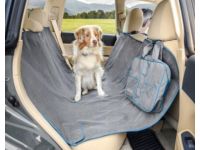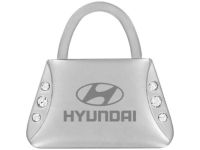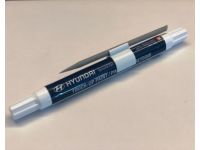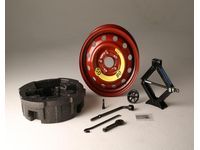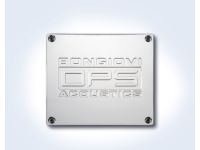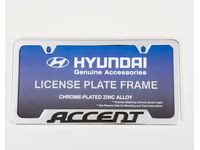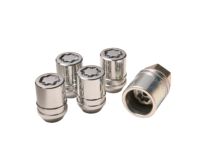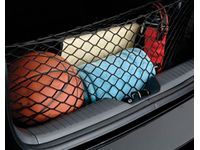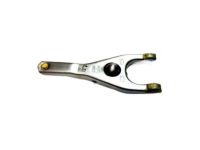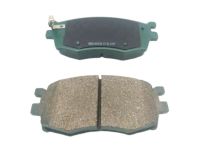- Live Chat
- 1-888-788-8214


Why choose HyundaiPartsDeal
- Exceptional Quality
At HyundaiPartsDeal.com, we prioritize providing only top-quality, genuine parts for your Hyundai Accent vehicle, ensuring it gets the most optimal performance and reliability. We're the best online store for genuine parts. All our products go through precise testing before being sold to ensure the best of the best for your vehicle.
- Value For Money
If you want to maintain your vehicle running at its peak, HyundaiPartsDeal.com is the right online store to get the genuine parts and accessories you need without breaking your wallet. High-quality parts and discounted prices come together here. You get the same reliability while enjoying significant cost savings by purchasing OEM parts for your repairs or upgrades.
- Quick Delivery
HyundaiPartsDeal.com partners with national major carriers to make OEM parts available for you in an expedited fashion. Also, all of our items are on hand, which ensures your order is shipped as soon as it's placed.
Popular Genuine Hyundai Accent Parts
- Engine Parts View More >
- Trim Parts View More >
- Chassis Parts View More >
- Electrical Parts View More >
- Transmission Parts View More >
- Body Parts View More >
Shop Genuine Hyundai Accent Parts with HyundaiPartsDeal.com
The Hyundai Accent, a subcompact car model, debuted in 1994 as the successor to the Hyundai Excel. Its name signifies an "Advanced Compact Car of Epoch-making New Technology". Notable for its global reach, the first-generation Accent was manufactured in seven assembly plants worldwide, featuring a 1.5L inline 4-cylinder engine with 92 horsepower. The second generation, introduced with a more angular body, offered a choice between sedan and hatchback styles, along with a revised 1.5L engine and an upgraded 1.6L DOHC a year later. It also marked the introduction of Hyundai's first diesel car model, equipped with a 1.5L 3-cylinder direct injection turbodiesel engine. The third generation brought a larger interior and a new exterior look, with enhanced features like air conditioning, power steering tilt, optional four-wheel disc antilock brakes, and six airbags. The fourth generation, also known as the Verna, debuted at the 2010 Beijing Auto Show, retaining the 1.6L 4-cylinder engine but introducing a 6-speed transmission. This generation, presented at the 2011 Montreal Auto Show for North American audiences, boasted 138 horsepower and 123 lb-ft of torque with a refreshed aluminum head and block design.
Hyundai Accent, like all vehicles, is susceptible to wear and tear, leading to potential issues. One common problem as reported by Accent owners is premature clutch and transmission failure. Symptoms include inaccurate gear readings, the inability to turn off the vehicle or engage gears, difficulty shifting gears, and undercarriage grinding noises. These signs suggest that the Accent's bellhousing, clutch fork, shift cable, and transfer case seal may require inspection. Another frequent issue is engine failure, characterized by decreased engine performance, stalling, rough running, misfiring, retarded ignition timing, or starting issues. A constant whining sound from the engine and frequent coolant top-ups due to leakage causing engine overheating are also reported. Suspected components to check include the oil filter, coolant reservoir cap, fuel filter, timing chain tensioner, timing chain, fuel pump, and timing belt. Suspension failure, another serious issue, could be due to a broken steering knuckle and faulty trailing arm bushing, leading to loss of vehicle control. Regular checks and maintenance are also advised for frequently used parts like the door lock cylinder, antenna mast, fog light, and wiper blades.
Originating directly from Hyundai, OEM parts excel in quality, longevity, and fitment. They undergo severe quality testing, ensuring its safety, durability, and performance that matches your original parts. With our website's selection of OEM Hyundai Accent parts, such as Accessories, you can fulfill your need for quality while adhering to your budget. All our genuine Hyundai Accent parts are affordably priced and come with a manufacturer's warranty, ensuring you get the best value for your money.
Hyundai Accent Parts Questions & Answers
- Q: How do you remove the Clutch Fork and Release Bearing on Hyundai Accent?A: To remove the transaxle, start by pulling the ends of the bearing retaining clip out of the release fork using pliers. Then, carefully remove the bearing from the clutch housing, being mindful of the retaining spring. If the bearing is not turning smoothly or is noisy, it should be replaced. If reusing the old bearing, wipe it clean with a rag, but avoid immersing it in solvent. Check the release fork ends for excessive wear and replace if necessary. For 1999 and earlier models, drive out the spring pins with a pin punch and hammer, then remove the fork, spring, and spacers. For installation, lubricate the release shaft bore in the clutch housing with high temperature grease and slide the shaft partially into the housing. Place the spacers, spring, and fork in position, then slide the shaft through and align the spring pin holes. Insert new spring pins. On 2000 and later models, lubricate the fork ball stud and fork. Lubricate the release fork ends and pack the inner groove of the release bearing with high-temperature grease. Position the bearing against the release fork and install the retaining clip securely. Finally, reinstall the transaxle.
- Q: How to replace front and rear disc brake pads on Hyundai Accent?A: Remove the brake fluid reservoir cap and siphon off two-thirds of the fluid. Apply the parking brake and untighten the lug nuts. Raise the vehicle, support it firmly on jackstands, and take off the wheels. Clean the brake disc with brake system cleaner. For Sumitomo calipers, remove the pad protector, M-clip, spring, and pad retaining pins. Push the inner brake pad in to bottom the piston, then remove the brake pads. For Tokico calipers and 1989+ models, push the piston back and remove the caliper bolt. Swing the caliper up and remove the pads. Apply anti-squeal compound to the pads and place spring clips on the bracket. Attach the shims to the new pads, and insert the pads. For 2012+ rear brake pads, retract the piston by rotating it, swing the caliper down, and install the bolt. After replacing pads, depress the brake pedal, check the fluid level, and check for leaks before driving.


















































